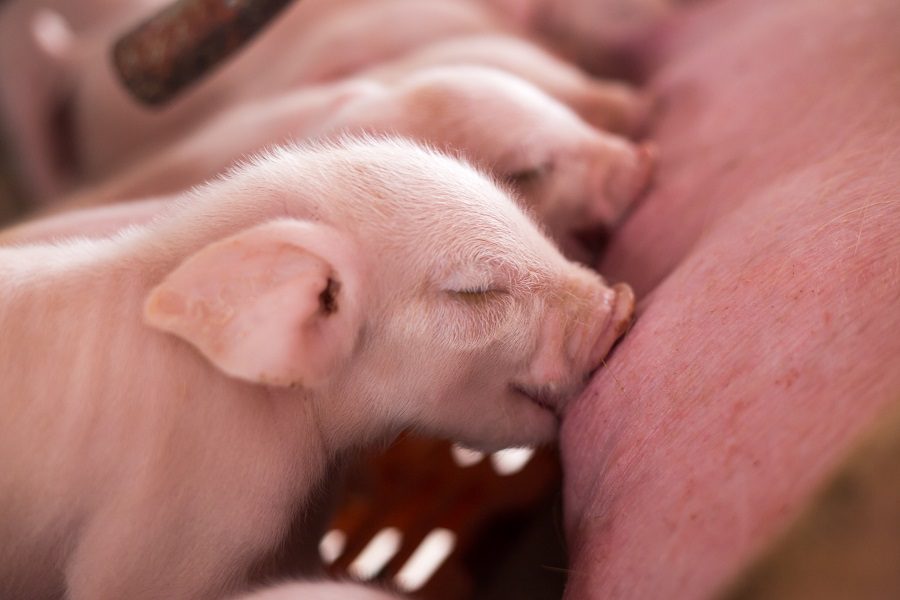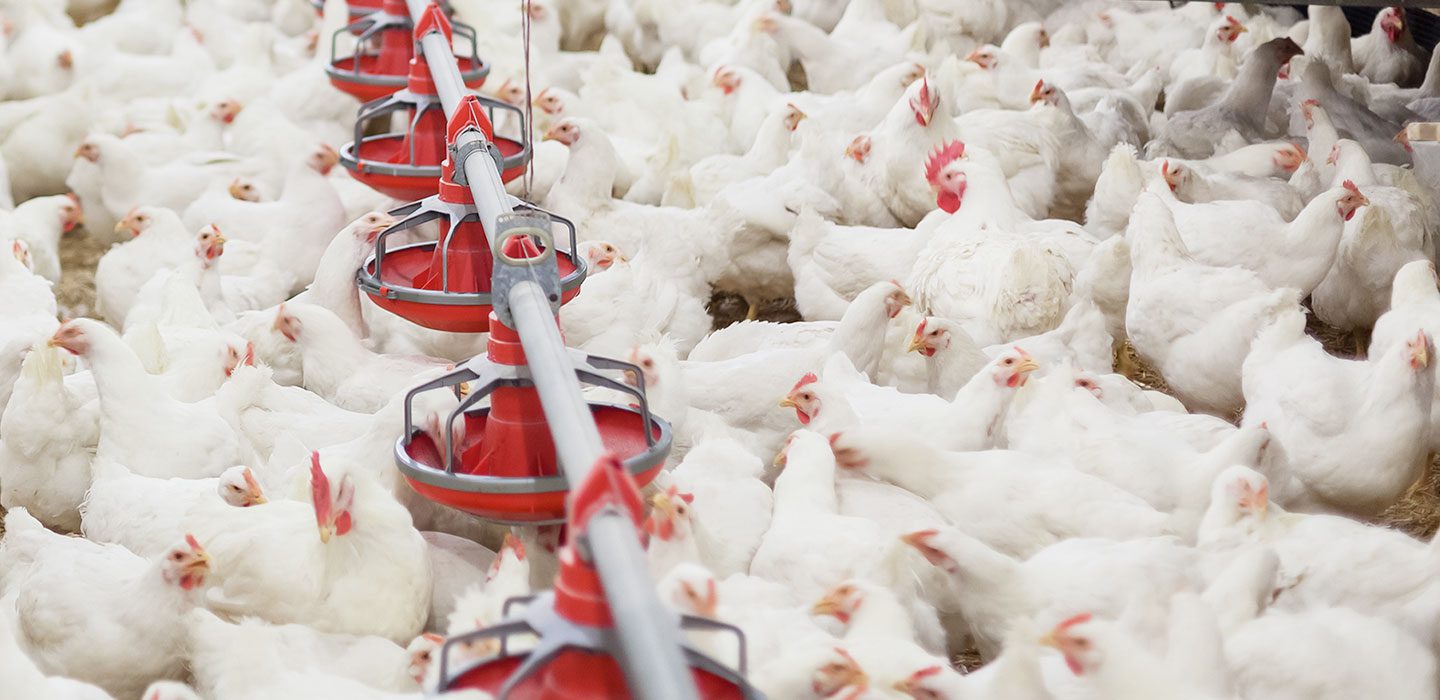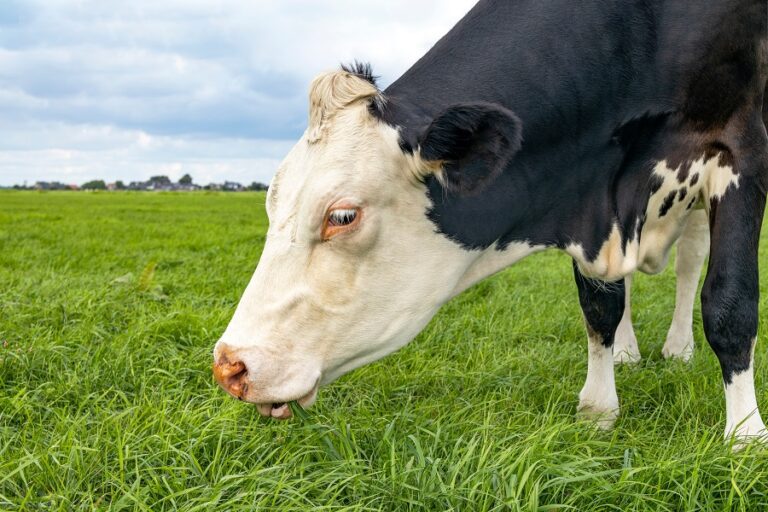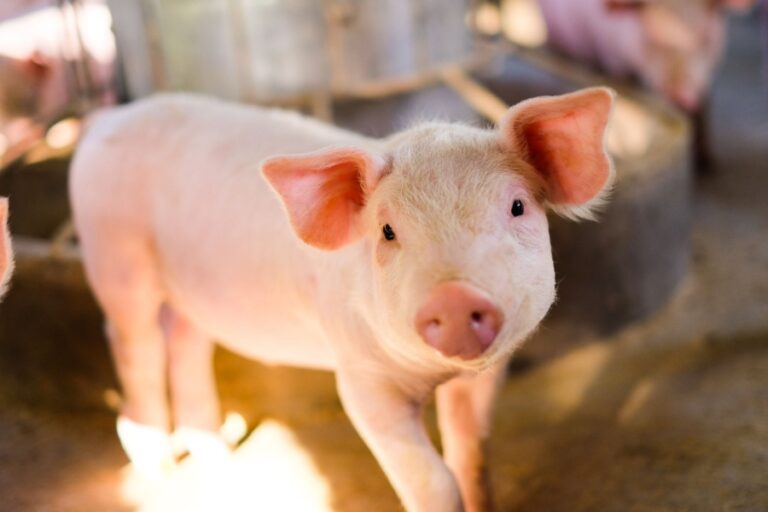Chelated Trace Minerals Support Suckling Piglet Mortality and Quality

Piglet survivability from birth to weaning and litter uniformity remains a major challenge as genetic selection for sow prolificacy continues1. One significant contributing factor may be the deficiency of maternal nutrients, including trace minerals, reaching the offspring, resulting in decreased intrauterine growth and development as well as poor levels of nutrients in the milk2.
Trace minerals are shown to have a powerful impact on progeny health and development. Multiple commercial-scale trials with MINTREX® Bis-Chelated Trace Minerals in gilts and sows have shown a reduction in pigs born below 1.0 kg even as litter size3 and farrowing rate increased. These studies also show sow retention beyond parity three and more pigs weaned per litter4. In a recent side-by-side field study in France5, the number of piglets weaned per litter was also significantly higher for sows fed MINTREX® Bis-Chelated Trace Minerals (+ 0.6 piglets/litter). These results show the importance of a highly bioavailable trace mineral source.
Fewer Stillborn Piglets and Reduced Pre-weaning Mortality
When we talk about litter size, we are referring to the total live births, stillbirths and mummies. It’s possible to increase the number of weaned piglets by reducing the number of stillbirths, but it requires understanding the origin of piglet stillbirths. In the recent French trial, the source of mortality was evaluated in conjunction with trace mineral supplementation. Pre-wean mortality decreased by 2.9% pts in the group fed bis-chelated trace minerals, with fewer stillborn piglets (-34%). The reduction in stillbirths was stronger in older sows (parity 4 and above). These results show that as the sows’ mineral reserves (Ca, P, Mg, Zn, Cu, etc.) gradually decrease over parities6, MINTREX® Bis-Chelated Trace Minerals provided sufficient trace minerals to cover the needs of their offspring and the maintenance needs of older sows.
How the Uterus Affects the Next Generation
The benefits of a powerful trace mineral source can even be passed to the next generation. New advances in epigenetics have solidified the concept that maternal nutrition, stress or illness during pregnancy can affect utero development with implications for the health and productivity of the offspring later in life.
Supplementation of MINTREX® Bis-Chelated Trace Minerals to sows during gestation is shown to have a positive effect on gut inflammation and improve skeletal muscle growth in progeny piglets by modulating gene expression7. In the French trial, piglets in the bis-chelated trace minerals group had significantly fewer treatments for scouring (-27%) and with anti-inflammatories (-38%). Additionally, the number of pigs with low body weight at weaning (<6.5kg) tended to be lower for this group (-4.1 % pts) with the body weight curve at weaning shifted to the right; the greatest impact on weaning weight was on the lightest and heaviest weight pigs at birth. Studies suggest getting a strong start sets young pigs up for optimum lifetime performance.
The Right Mineral
Feeding any type of trace mineral won’t achieve these numbers. The minerals must be highly bioavailable, supporting absorption and use by the animal. The fact is trace minerals differ vastly in their bioavailability. Studies show bis-chelated trace minerals from NOVUS are more stable and less reactive to other components in the digestive tract, so the minerals can reach the absorption site to be used to their maximum efficiency. In addition, thanks to their high bioavailability, bis-chelated trace minerals are less likely to be excreted in manure, resulting in less environmental impact.
For more information about incorporating bis-chelated trace minerals into sow diets, speak with your NOVUS representative.
- Kim S W, and Hansen J A. 2013. Feed formulation and feeding program. In: Chiba L, editor, Sustainable swine nutrition. p. 217–228.
- Kim S W, and Hansen J A. 2013. Feed formulation and feeding program. In: Chiba L, editor, Sustainable swine nutrition. p. 217–228. Zhang S, Heng J, Song H, Zhang Y, Lin X, Tian M, Chen F, and Guan W. 2019. Role of maternal dietary protein and amino acids on fetal programming, early neonatal development, and lactation in swine. Animals(Basel). 9:19.
- Lawrence B, Loeffler T, Ma Y, and Greiner, L. 2018. Mineral source matters conception to market. Proceedings of the Annual Meeting of the American Association of Swine Veterinarians. 83.
- Zhao J, Greiner L, Keith N, Vazquez-Anon M, Knight C D, and Harrell R J. 2011. Improved retention rates and reduced culling for lameness for sows fed a chelated trace mineral blend. Proceedings of the Leman Conference. 197. Hintz A, Lawrence B, Collins M, and Heiwy C. 2022. Two-year commercial demonstration of methionine hydroxy-analogue chelated zinc, copper, and manganese (MINTREX®) on sow reproductive and production performance in a highly prolific sow farm. Proceedings of the Annual Meeting of the American Association of Swine Veterinarians. p. 324-325. Barea R, et al. 2019. Utilisation d’oligo-éléments organiques dans l’alimentation des truies : effets sur la longévité et les performances des portées. Journées de la Recerche Porcine. 51:167.
- Hintz A., et al. 2023. Mineral methionine hydroxy analog chelate as the sow trace mineral source impacts pre-wean mortality and piglet quality. Leman Swine Conference
- Mahan D.C., Newton E.A., 1995. Effect of initial breeding weight on macro- and micromineral composition over a three-parity period using a high-producing sow genotype. J. Anim. Sci.,73, 151-158.
- Jang K. B., Kim J. H., Purvis J. M., Chen J., Ren P., Vazquez-Anon M., Kim S. W., 2020. Effects of mineral methionine hydroxy analog chelate in sow diets on epigenetic modification and growth of progeny. Journal of Animal Science, 98(9), 1–12.

Intelligent Nutrition for Your Business
More science. More insight. More inspiration. More ways for you to feed the world.





